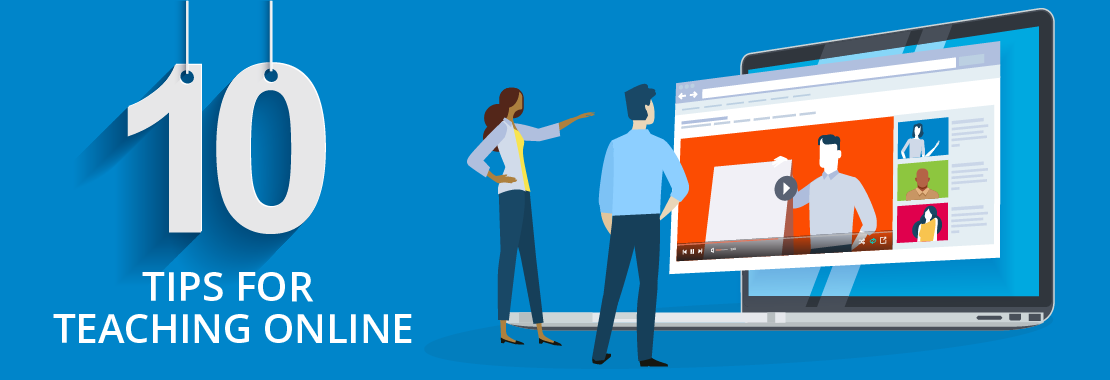No matter how long you’ve been standing in front of a classroom, teaching online can be a daunting task.
Online classes can feel quite different from in-person classes, and you may not be able to do all the same things online that you did face-to-face. But that’s not to say you can’t create the same type of inclusive, quality learning environment for your students.
With the right tools, some creativity and a healthy dose of patience, you can master the move online. To help you make the transition as seamless as possible, we asked current online instructors for their best advice. So, here are ten practical tips to get you started:
1) Be Specific – Very Specific
When communicating online you can never be too clear. If you want to save yourself a lot of time and headache, make sure you clearly define all class expectations up front. That means more than simply posting a syllabus or grading rubric. Instead try sharing real life examples of what to do and what not to do whenever possible.
2) Clarify Tone and Communication Styles
This may seem like a no-brainer but because you’re not face-to-face it’s worth repeating. Students tend to be more informal when communicating online—thanks to online messaging and social media—so it’s never a bad idea to set some classroom communication guidelines from the start.
3) Continuously Encourage Engagement
Keeping your students actively engaged in an online setting is a constant challenge. Hiding behind screens it’s easy for students to check out or do the bare minimum, so you’ll have to work at keeping the conversation going. Try requiring minimum response lengths for assignments and posing open-ended questions.
4) More Is Not Always Better
When creating online courses, we tend to get into the mindset of more is better. More links, more buttons, more apps. But too many additional resources and tools can be distracting and overwhelming for your students. So, don’t feel the need to try and overcompensate for the lack of in-person instruction with bells and whistles; instead, stick with a few trusted resources.
5) Be Responsive—but Set Limits
It’s important to keep in mind that students are accustomed to instant feedback. But you’re not face-to-face and an email is not a text message. Just because you’re online, it doesn’t mean that you’re accessible 24/7. Communicate with your students when you are and when you are not available, as well as when they can expect a reply, so everyone is on the same page.
6) Establish a Routine
Teaching online comes with a level of uncertainty and stress. To help save your inbox from a flood of weekly questions, it’s best to create a basic class structure from week to week for consistency. When students know they can expect and plan for certain types of activities or assignments, they’ll feel more at ease.
7) Create a Separate Space for Your Students
Online classes mean your students are missing out on social interactions with their peers. The conversations and discussions they would normally have before and after class are still important so try creating a separate online forum just for them to make introductions, socialize and bounce ideas around.
8) Don’t Forget the Value of Group Assignments
Just because it’s online doesn’t mean you have to ditch the group work. Not only are group assignments a good excuse for some additional peer interaction and engagement but they allow your students to showcase their different strengths and interests. To keep online group work manageable, try breaking projects up into multiple steps with smaller assignments.
9) Add a Personal Touch
When you’re staring at a screen and uploading assignments, it’s easy to feel like you’re being taught by a computer rather than a person – and that impersonal feeling is not very conducive for learning. You can help your students feel more connected by injecting some personal touches. Post a picture of yourself or a fun introductory video, anything to remind them that you are indeed a human.
10) Practice Empathy and Compassion
With online teaching there are things that will inevitably go wrong. There will be technical issues, miscommunications and activities that don’t go as planned. Try and assume the best of intentions and remember that we’re all dealing with this new normal together.
If you would like additional online teaching tips, visit our COVID-19 Faculty Support page for access to free resources, tutorials and personalized training.

